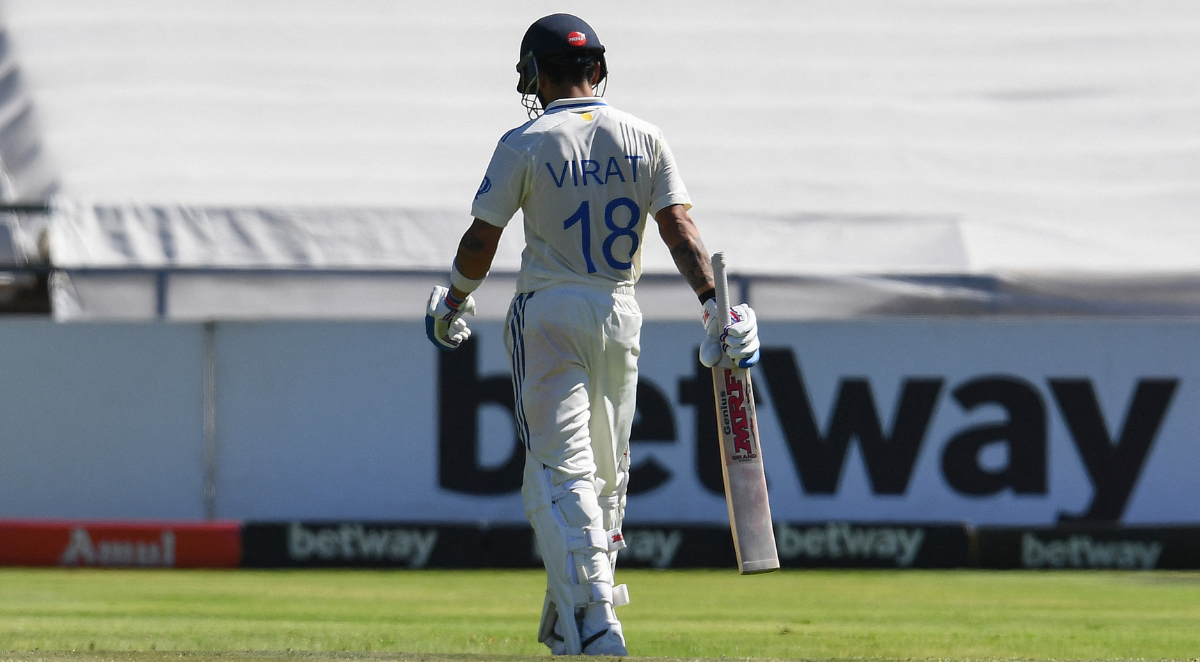South Africa and India shared a record-breaking first day at Newlands. Ben Gardner examines what contributed to the chaos.
When something happens towards the extremes of historical precedent, it’s never just one thing that has caused it. India and South Africa combined to lose 23 wickets on the first day of the Cape Town Test, the most since 1902. South Africa were bowled out for 55, their lowest score since 1932. India lost six wickets for no runs to end their innings, the first time any team has ever suffered such a collapse. This was one of the most remarkable days of Test cricket that has ever been played.
Young and old, no one was spared. Tristan Stubbs, honed on one-day cricket, found himself faced with an entirely alien challenge but an oddly relatable time-frame. He fell twice in the day, as did Dean Elgar, retiring from Test cricket after this game. It’s some way to go out, and somehow South Africa still aren’t quite buried. Virat Kohli offered a bow and a kiss after catching Elgar the second time around, paying tribute and revelling in the carnage. This was a day of high entertainment. You wouldn’t want every Test to be like this, but then the beauty of this format is the variation in conditions and scenarios it throws up. Onto a blank canvas, any number of artworks can be created. This time, it was a Jackson Pollock painting of wickets and high-fives.
Still, there are Indian fans who, as much as their team are in a strong position, will be frustrated at the tone of the coverage for a probable two-day Test outside of India compared to one inside it, and this was, no doubt, a tough surface. There was sideways movement and variable bounce, though with extra bounce on offer at times rather than the ball shooting through. It’s the latter that tends to draw more instant criticism.
South Africa coach Ashwell Prince laid out the challenge after play. “I don’t think as batters you mind the pace in the wicket but then you need the bounce to be consistent,” he said. “The bounce was a little bit inconsistent with some keeping low and some bouncing quite steeply. There’s also the seam movement, which you don’t mind on day one but if you have the seam movement with consistent bounce, then it’s a different situation.”
Added to that, you had two high-class pace attacks equipped to excel in the conditions. Mohammed Siraj, when he blows hot, is close to unstoppable. Just ask Sri Lanka. Mukesh Kumar and Nandre Burger have each arrived into Test cricket looking ready made. Jasprit Bumrah and Kagiso Rabada are all-timers. The two combined to make batting historically challenging, with day one recording the lowest expected average in CricViz’s database.
According to our Expected Runs and Wickets model, the Expected Average of 18.0 on Day 1 at Newlands today is the lowest for any Day 1 of a Test match since the start of the ball tracking era. #SAvIND
— The CricViz Analyst (@cricvizanalyst) January 3, 2024
“If you give a top-quality attack bowler-friendly conditions then they can do some serious damage,” Prince said. Elgar labelled conditions “challenging” but stopped short of calling the pitch poor. And there were other factors at play.
The outstanding bowlers were met with teams there to be run through, each picking bowling heavy line-ups. South Africa’s Nos.3-5 have played four Tests between them. Kyle Verreynne, at No.6, has little Test pedigree with the bat. Marco Jansen, a bowling all-rounder, is at No.7. Then it’s the tail. India’s top order has the greater credentials, and come the final shakedown, the 121 runs contributed by Rohit Sharma, Shubman Gill and Virat Kohli might prove the difference. But if ever there were a tail liable to supply an historically woeful collapse, it’s India’s, with Bumrah (Test average: 6.87) at No.8.
There were batting frailties too, though not quite of the sort that those who decry the influence of T20 cricket would point to. While there was the odd attacking shot that went wrong, the theme of the day was the tentative defence edged behind. All 23 dismissals hit the bat before either being caught or hitting the stumps. According to CricViz, only one of those would have hit the stumps without intervention. And yet the leave was rarely seen, with India offering no shot to 18 per cent of balls, and South Africa to 13 per cent.
21 of the 22 wickets to fall at Newlands today were projected to miss the stumps.
India left the ball 38 times in their innings(18%), meanwhile South Africa have left the ball just 33 times across both innings thus far(13%). #SAvIND
— The CricViz Analyst (@cricvizanalyst) January 3, 2024
And then there’s the catching. Twenty chances offered, 20 chances taken, and there were some fine grabs in there too. On another day, perhaps five would have gone down.
When you zoom out, that this Indian bowling line-up is capable of bowling this South African batting line-up for 55, with everything in their favour, is believable. Given the first Test, in which India made 245 despite a century from KL Rahul described as one of their greatest ever, and then 131, it is also no surprise that India would subside for 153. And 62-3 is a normal enough Test start. It was a beautiful freak of a day, and the best part is, there’s no knowing what tomorrow has in store.



